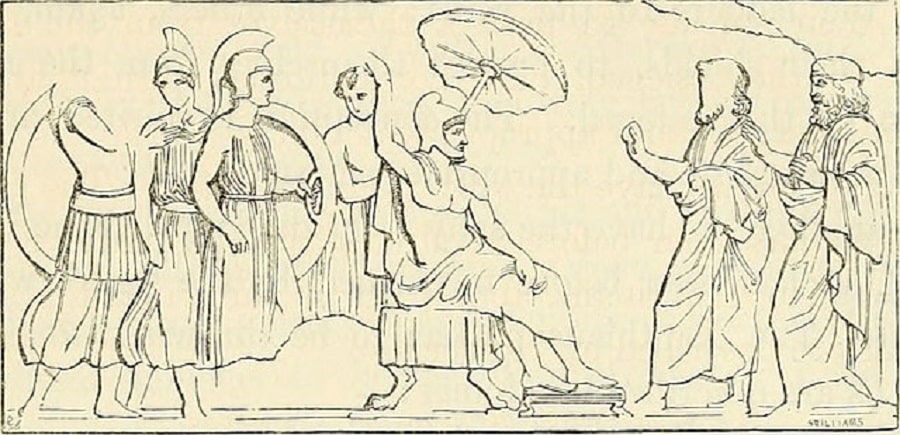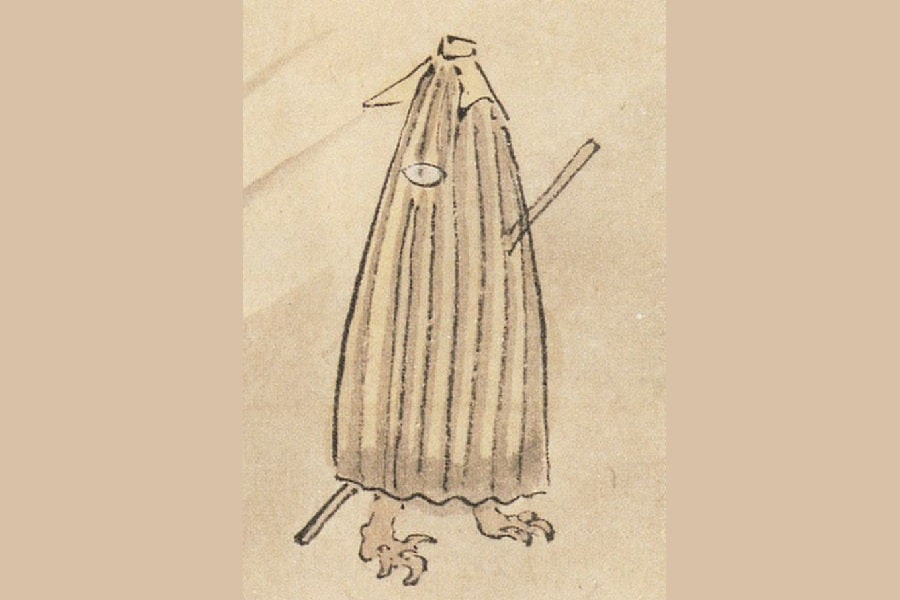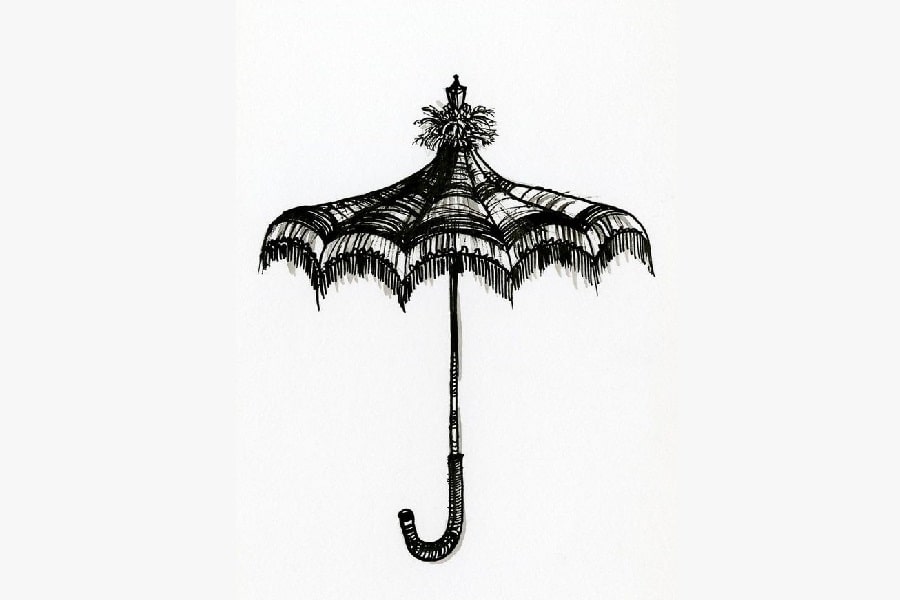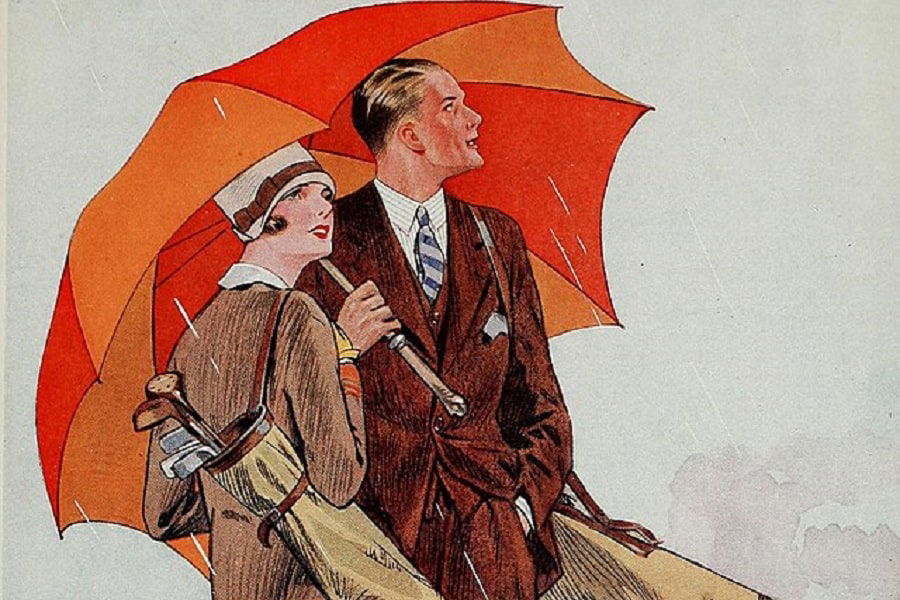Umbrellas may seem like a simple and very useful invention. One tool to protect against rain, bright sunshine, and even snow – that seems quite miraculous, does it not?
But the actual execution of this simple machine must have required some trial and error. We all know what an umbrella looks like and what it is used for. It is essentially a canopy over one’s head, held up by a pole and some spokes. It collapses in on itself and can be folded when not in use. So, who came up with the mechanics where the umbrella was concerned?
When Was the Umbrella Invented?

One thing we do know about umbrellas is that they are old. They have existed for more than 5000 years and have appeared in archaeological records of ancient civilizations. The oldest example of them is from the Mesopotamian Civilization in West Asia. As the sun was a much greater enemy than the wind and rain were in those days, it is believed that these ancient umbrellas were first created to protect people from the sun. They were made of palm leaves or papyrus and were often huge and heavy. Multiple people may have been required to lift them. In Ancient Mesopotamia and Egypt, umbrellas were used exclusively by the upper classes.
READ MORE: Ancient Egypt Timeline: Predynastic Period Until the Persian Conquest
Myths in Japan talk about umbrellas or parasols that protected them from rain and snow. But the actual evidence of umbrellas has been found in Ancient China. Going back as far as 3500 BCE, these umbrellas had poles made of bamboo sticks and animal skins stretched across them. This provided protection from both sun and rain. These umbrellas were not waterproof as modern ones are, so we can assume they had rather short lifespans. The waterproofing of umbrellas came into existence 500 years later.
READ MORE: Ancient Civilizations Timeline: 16 Oldest Known Cultures From Around The World
How did European umbrellas come about? They probably traveled via Rome and Greece from ancient Egypt. We know that Tutankhamun and his family used umbrellas made of feathers or palm leaves to protect themselves from the sun. Since the Roman Empire and the Greeks had such close ties with the Egyptians, it is natural that they took up the habit. In Rome, it was almost exclusively women who used the umbrella to protect themselves from the heat.
READ MORE: Ancient Greece Timeline: Pre-Mycenaean to the Roman Conquest
Where Was the Umbrella Invented?
It is not quite clear where exactly the umbrella was invented, since evidence seems to point in different directions. However, when we think of the individual, handheld umbrellas that we are familiar with to this day, perhaps China would be a safe option. At least, as far as archaeological data seems to suggest, this was the case.
Stories and myths from Japan say that the ancient Japanese people used umbrellas for rain and snow and these myths and stories should never be dismissed out of hand. In fact, umbrellas are so closely interwoven with Japanese mythology and folklore that there is a type of ghost or spirit in Japanese culture called Kasa-Obake, which rises from old and broken umbrellas.

READ MORE: Japanese Gods and Mythology: The Shinto Religion
Etymology
While writing the history of the umbrella, we must consider where the word ‘umbrella’ even came from. The word ‘umbrella’ is English. It derives from the Latin word ‘umbra’ which means ‘shadow’ or ‘shade.’ The Italian equivalent for this is ‘ombra.’
There are also a number of slang words for umbrellas in English. The most common is brolly, which is used not just in the United Kingdom but also in Australia, New Zealand, South Africa, Kenya, and Ireland. A funny American term for umbrellas from about 200 years ago is ‘Bumbershoot,’ perhaps derived from ‘bambooshoot.’ In the 18th century, CE, men in England began calling their umbrellas Hanways after Jonas Hanway. He was a Persian traveler who famously carried around an umbrella, even though it was typically considered a women’s accessory.
In England, umbrellas were also called ‘gamps,’ after Mrs. Gamps from the Charles Dickens novel, Martin Chuzzlewit. Mrs. Gamps always carried around an umbrella and this slang has become very well-established in the UK.
Parasol
‘Parasol’ is made of two French words, ‘para’ meaning ‘to protect from’ and ‘sol’ meaning ‘sun.’ There is an alternative called parapluie, where ‘pluie’ means ‘rain.’ This alternative is not as popular as its counterpart. ‘Para’ is probably derived from the Latin ‘parare’ which means ‘to shield.’
Thus, there does seem to be a difference between an umbrella and a parasol. The former is an instrument that protects one from the rain while the latter is supposed to be used in bright sunshine, to ward off the heat. However, in common parlance, the words are used interchangeably and can just mean a canopy to protect one from the elements.

Only for the Ladies
With the establishment of trade routes, umbrellas traveled to the rest of Europe from Egypt, via Rome and Greece. These were the non-waterproof versions that could shield one against the sun alone. Thus, they were used exclusively by women to protect their complexions from the sun. These umbrellas were, again, used only by the uppermost classes.
When Catherine de Medici married Henri II of France and arrived in the French court, she brought her parasols with her from Italy. Eager to copy the queen, the other ladies soon took to using parasols as well. By the 1750s, umbrellas were being produced commercially and women from the wetter parts of northern Europe were using them regularly.
Until the 16th century CE, umbrellas were considered a feminine accessory in Europe and England. As women were considered overly delicate and fragile, the umbrella was meant to shield them from the sun and the rain. It was the traveler and writer Jonas Hanway that changed this by carrying an umbrella for 30 years. Following in his footsteps, umbrellas became popular even among gentlemen.
The Modern Umbrella
The ancient Chinese people were the first to wax and waterproof their paper umbrellas and give us the prototype for modern umbrellas. Thus, they actually taught us how to protect ourselves from the rain with these tools. Since then, the umbrella has changed and improved in many ways.
In 1830, a man named James Smith opened the first umbrella shop in London. It was called James Smith & Sons. It is still in business and Londoners can buy umbrellas from the shop to this day. By the 1900s, they were selling 2 million umbrellas annually.
The umbrella as we know it today, with the steel ribbed design, was invented by a man named Samuel Fox in 1852. He took inspiration from the corsets that women used to wear in those days. He patented the umbrella and sold the design to James Smith & Sons.
In 1885, an American called John Van Wormer invented the collapsible umbrella. But it did not become popular because he could not find anyone to manufacture it on a large scale. The Balogh brothers from Hungary patented the foldable or pocket-sized umbrella in 1923. In 1928, pocket umbrellas were introduced by Hans Haupt. The compact pocket umbrella became popular all over the world as they were not as unwieldy as the very large convertible umbrellas of before.
There are many varieties of umbrellas available today, like golf umbrellas, walking stick umbrellas, and transparent umbrellas. Even luxurious silk umbrellas are now being produced as a throwback to the time of the ancient Egyptians, Romans, Indians, and Greeks. Those are for pure show and a fashion accessory more than a tool.

The Umbrella in the Years to Come
Throughout the history of the umbrella, these useful tools have changed a great deal. The umbrella is both a practical object and a symbol of high fashion and status, depending on the type. Forget about the basic umbrella. Umbrellas are just going to get more and more futuristic as time goes by. They are going to be able to withstand much higher wind speeds and will be operated by remote control.
Already, the funnel-shaped umbrella that looks like it has been turned inside out and shades an area of 50 square meters looks like something out of a science fiction film. Used to shade large courtyards and as a piece of architecture, this simple but elegant bit of construction stretches your imagination of what an umbrella actually is.
The Airblow 2050, designed by James Dyson and Yi-Jian Wu, is an invisible barrier that can bounce droplets of rain away from your body. It is more like an airy dome than an umbrella as the user can operate it like a bubble around themselves.
Types of Umbrellas
There are so many different kinds of umbrellas, from the small foldable umbrellas that collapse in on themselves to the large and fancy paper parasol with its beautifully painted patterns. Golf umbrellas, solid stick umbrellas, and beach umbrellas or cocktail umbrellas are some examples.
Paper Umbrella
Paper parasols were originally used by the Chinese, although they also used silk parasols. They had bamboo poles and beautiful designs painted on them. In the modern day, these types of parasols may be used as a fashion accessory or style statement.
Steel Ribbed Umbrella
A brilliant innovation, this type of umbrella became widely used by the public. It provided good support and was strong enough to withstand heavy winds. However, they can be a little unwieldy because they are so big. Unlike foldable umbrellas, only the canopy and not the pole itself can retract and fold in on itself.

Beach Umbrella
Used to shade a larger area and multiple people, these can be stuck in the sand to protect you from the sun. They don’t have handles because they are not handheld umbrellas. They are sturdy and don’t blow away easily in high winds.
Foldable Umbrella
Variations of the foldable pocket umbrella were invented by several people in the 1900s and this is still the most common type of umbrella in use today. In 1969, Bradford E. Phillips patented his ‘working folding umbrella,’ a hilarious name implying that the rest of the folding umbrellas don’t work. Being small enough to fit in a handbag or coat pocket meant that umbrellas were much more mobile and could be carried anywhere.
Unusual Uses of Umbrellas
Other than protection from the sun and rain, umbrellas have other symbolic, aesthetic, or ritual purposes in many cultures around the world.
Architecture
Umbrellas and umbrella-shaped canopies have been used in architecture for a very long time. Medieval South Asian architecture provides many instances of canopies that have the distinctive dome-like shape of umbrellas. Even the word for both – ‘chattri’ – is the same.
German architect Frei Otto utilized the shape of the individual handheld umbrella to make lightweight architectural constructions in the 1950s. His beautiful and elegant canopies and architectural wonders had made him world-renowned well before his death.
Protection
As far back as 1902, women were being instructed on how to use umbrellas to protect themselves from attackers. The steel ribbing and weight of the umbrella make it an ideal weapon in a crunch. The 2014 Hong Kong Revolution was called the Umbrella Revolution because of the way the protestors used umbrellas to protect themselves from tear gas and pepper spray by the authorities.
Even in films like Kingsman: The Secret Service, the characters used a bullet-resistant umbrella as a shield to protect themselves.

Religion
The umbrella is commonly used by Roman Catholics in some of their ceremonies and processions. The umbrella is held over the Holy Sacrament by a bearer during the procession. In some oriental orthodox churches, umbrellas are used as a sign of respect for the bishop.
In Buddhism too an ornamental umbrella is held over relics or statues of the Lord Buddha or over their scriptures. This is a sign of respect and of the exalted position of these items.